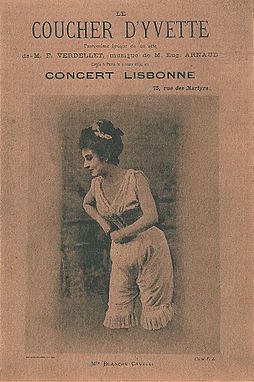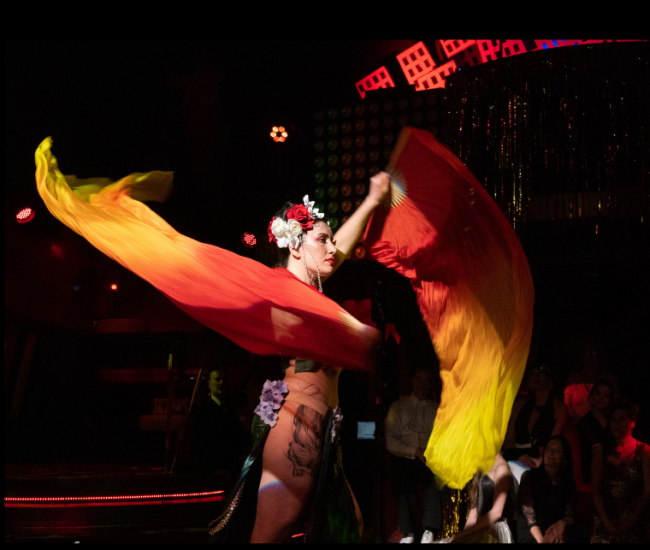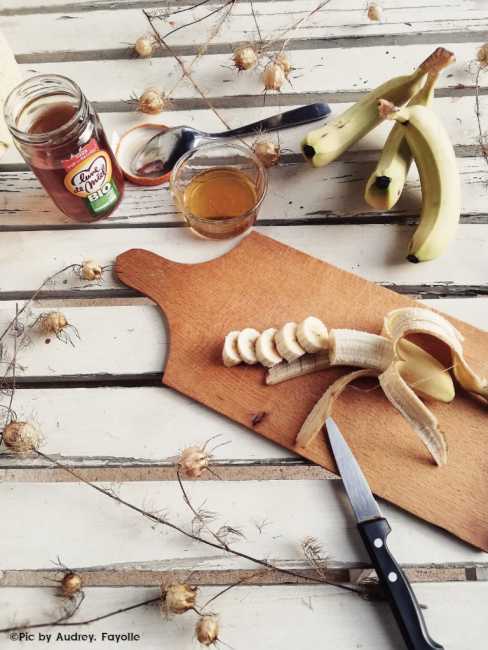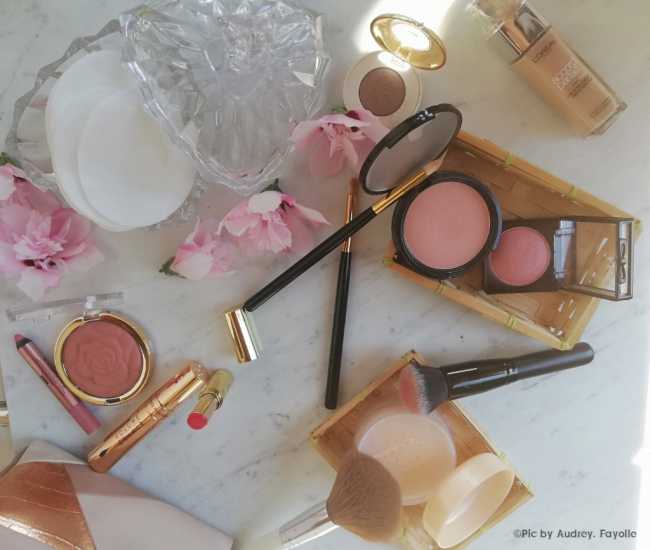The story goes that the beginnings of burlesque stripping began in Paris, one evening in 1894, with a bizarre performance at the Concert Lisbonne, now the Divan du Monde on rue des Martyrs.
A Blanche Cavalli woman performs a striptease, removing her clothes one by one, as if to go to bed, and ends up completely naked – the likes of which had never been seen before! The show was all the rage, but torn between success and scandal, the venue remained closed for a year.

This was followed by a new kind of act at the “Folies Bergères” with the triumph of American artist Loie Fuller, famous for the veils she twirled in her choreography, which she called “Danse serpentine” . A pioneer of a new kind of dance, she dispensed with the corset and embodied a new freedom. This internationally-renowned artist went on to inspire many burlesque artists, including today’s British Vicky Butterfly.
The 2016 film “La danseuse “, directed by Stéphanie Di Giusto and starring actress Soko, tells her story.
https://www.youtube.com/watch?v=fIrnFrDXjlk
Just a stone’s throw from the rue des Martyrs, the Moulin Rouge is a phenomenal success, with its famous “French Cancan“, screams, big splits, jetés-battus and petticoat throws, attracting more and more enthusiasts. An exuberant, provocative dance, to the tune of Offenbach’s “Galop infernal”, later renamed French Cancan.
These dancers were pioneers in a society where women’s emancipation was very difficult, as it was often linked to a lack of financial independence. For the first time, there was a revolution: cancan dancers earned more than dancers.
Burlesque stripping can be expressed in many ways, but very often through dance numbers in which women stage the art of undressing.
https://www.youtube.com/watch?v=GjKJ1JzyAGA
Then back to the cinema, we meet Brigitte Bardot and Jeanne Moreau in the film “Viva Maria”:


